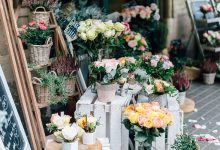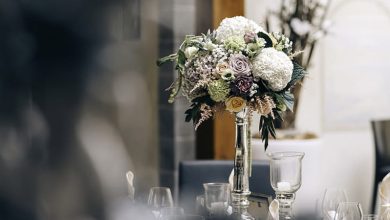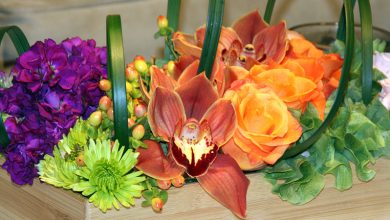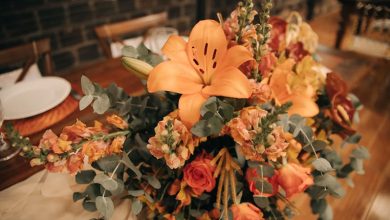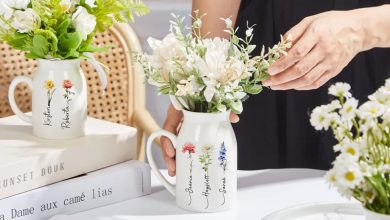What Are Artificial Flowers Made Of? Exploring Materials and Construction
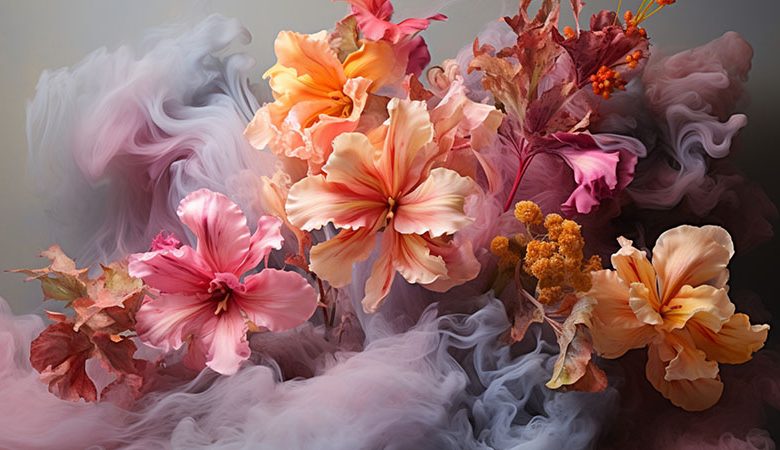
Artificial flowers have been around for centuries, adding beauty and color to our homes and events. But have you ever wondered what exactly goes into making these lifelike blooms and what artificial flowers are made of?
In this article, we’ll explore the materials and construction techniques used to create artificial flowers, shedding light on the fascinating world of floral fabrication.
Understanding the Basics
Artificial flowers are meticulously crafted replicas of real flowers, designed to mimic their natural beauty without wilting or fading. They are made from a variety of synthetic materials carefully chosen for their durability, flexibility, and ability to mimic the textures and colors of real petals, stems, and leaves.
Understanding the basics of what artificial flowers are made of can help us appreciate the intricate craftsmanship that goes into creating these stunning floral replicas.
The Role of Synthetic Materials
Synthetic materials play a crucial role in the production of artificial flowers, offering advantages such as durability, flexibility, and color retention. These materials include fabrics like silk, satin, and velvet, as well as plastics like polyethylene, polyurethane, and PVC.
Each material is selected based on its ability to mimic the appearance and texture of real flowers while ensuring longevity and resilience.
Emulating Natural Textures
One of the key challenges in creating lifelike artificial flowers is replicating the intricate textures found in real petals, stems, and leaves.
Fabric flowers are often made using techniques such as printing, embossing, and layering to achieve a realistic texture, while plastic flowers may be molded or sculpted to mimic the natural contours and creases of real blooms.
By carefully manipulating synthetic materials, artisans can create artificial flowers that are virtually indistinguishable from their natural counterparts.
Read More: What Artificial Flowers Can Be Used Outside? A Guide to Weather-Resistant Blooms
Color Matching and Dyeing Techniques
Another important aspect of artificial flower production is color matching and dyeing. Different materials absorb and reflect light in unique ways, so achieving accurate color representation is essential for creating realistic-looking flowers.
Fabric flowers are typically dyed using specialized techniques to ensure uniform color distribution and fade resistance, while plastic flowers may be painted or airbrushed to achieve lifelike hues and gradients. By mastering the art of color matching, artisans can create artificial flowers that capture the beauty and vibrancy of real blooms.
Combining Traditional Craftsmanship with Modern Technology
The production of artificial flowers involves a blend of traditional craftsmanship and modern technology. Skilled artisans painstakingly assemble each flower by hand, using techniques passed down through generations to create intricate details and lifelike shapes.
At the same time, advanced machinery and tools are used to streamline the production process, allowing for faster and more efficient manufacturing without sacrificing quality or precision.
This combination of old-world craftsmanship and cutting-edge technology ensures that each artificial flower is a true work of art, worthy of admiration and appreciation.
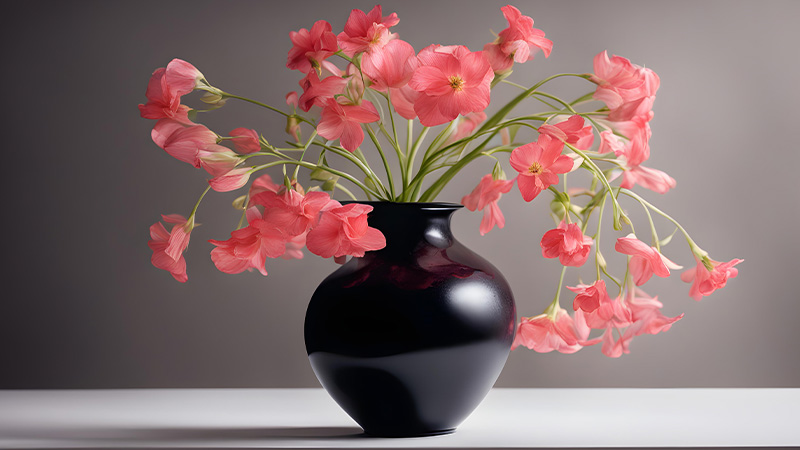
By understanding the basics of what artificial flowers are made of and how they are constructed, we can gain a deeper appreciation for the skill and artistry that goes into creating these beautiful floral replicas.
Whether used for home decor, weddings, or special events, artificial flowers continue to enchant and delight with their lifelike appearance and timeless beauty.
Read More: How to Keep Artificial Flowers from Fading: 10 Essential Tips
Fabric Flowers
Fabric flowers are one of the most common types of artificial flowers, known for their soft texture and realistic appearance. These flowers are typically made from materials such as silk, satin, or velvet, which are dyed and shaped to resemble real petals.
Fabric flowers are often used in bridal bouquets, corsages, and other special occasions due to their elegant and luxurious appearance. Key Points about Fabric Flowers:
- Soft Texture: Fabric flowers have a soft and delicate texture that closely resembles real petals, making them a popular choice for weddings and other special events.
- Variety of Materials: Fabric flowers can be made from a variety of materials, including silk, satin, velvet, and organza. Each material offers its own unique texture and appearance, allowing for a diverse range of floral designs.
- Dyeing Techniques: Fabric flowers are typically dyed using specialized techniques to achieve vibrant and long-lasting colors. These techniques may involve dip-dyeing, hand-painting, or sublimation printing to ensure uniform color distribution and fade resistance.
- Handcrafted Details: Many fabric flowers are handmade by skilled artisans, who carefully cut, shape, and assemble each petal to create lifelike blooms. This attention to detail results in stunning floral replicas that are virtually indistinguishable from real flowers.
- Versatility: Fabric flowers are highly versatile and can be customized in endless ways to suit different styles and preferences. They can be embellished with beads, pearls, or crystals for added glamour, or combined with other materials like lace or feathers for a unique and personalized touch.
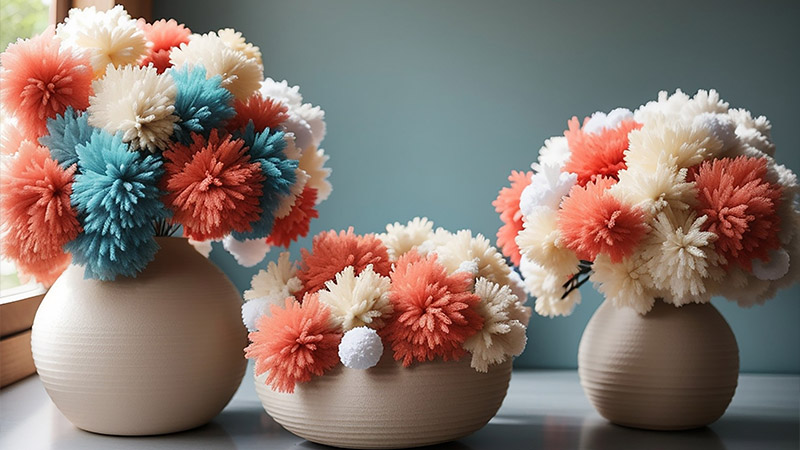
By understanding the intricacies of fabric flowers and the materials used to create them, we can appreciate the artistry and craftsmanship that goes into making these stunning floral replicas and gain insight into what artificial flowers are made of.
Whether used as a centerpiece for a wedding bouquet or as a decorative accent in home decor, fabric flowers add beauty and elegance to any setting with their lifelike appearance and soft, luxurious texture.
Read More: How to protect artificial flowers outside?
Plastic Flowers
Plastic flowers, also known as artificial or faux flowers, are another popular choice for artificial floral arrangements. These flowers are made from various types of plastics, including polyethylene, polyurethane, and PVC.
Plastic flowers are durable, lightweight, and easy to mold into intricate shapes, making them ideal for creating detailed and realistic floral designs. Key Points about Plastic Flowers:
- Durability: Plastic flowers are known for their durability and resilience, making them ideal for long-term use in both indoor and outdoor settings. Unlike real flowers, which wilt and fade over time, plastic flowers retain their color and shape indefinitely, making them a cost-effective and low-maintenance option for floral decor.
- Versatility: Plastic flowers come in a wide range of shapes, sizes, and colors, allowing for endless creative possibilities in floral design. They can be molded and sculpted into intricate shapes and arrangements, making them suitable for everything from simple bouquets to elaborate centerpieces.
- Ease of Care: One of the advantages of plastic flowers is their low maintenance requirements. Unlike real flowers, which require regular watering, pruning, and sunlight, plastic flowers require no special care other than occasional dusting or wiping to keep them looking fresh and vibrant.
- Realistic Appearance: Despite being made from plastic, modern artificial flowers are designed to closely resemble their real counterparts. Advanced manufacturing techniques allow for the creation of intricate details and textures that mimic the natural beauty of real flowers, resulting in stunningly realistic floral arrangements.
- Environmentally Friendly Options: While traditional plastic flowers are made from non-biodegradable materials, there are also eco-friendly options available made from recycled plastics or biodegradable materials. These sustainable alternatives offer the same durability and versatility as traditional plastic flowers while reducing environmental impact.
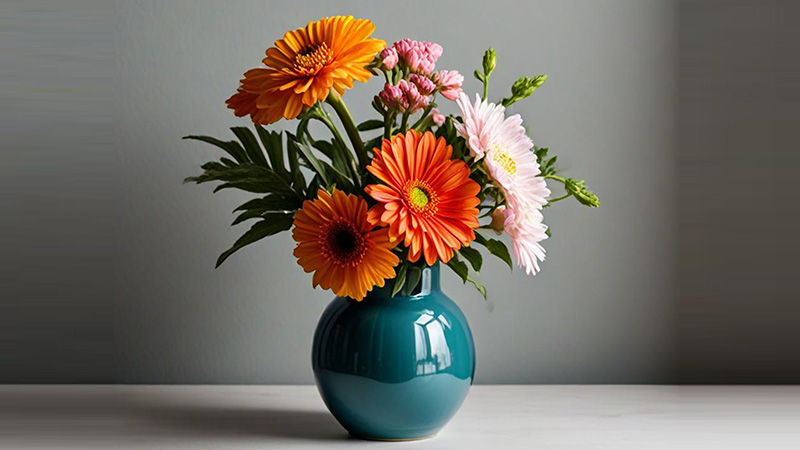
By understanding the unique characteristics of plastic flowers and the materials used to create them, we can appreciate the versatility and beauty of these artificial floral replicas and understand what artificial flowers are made of.
Whether used for home decor, weddings, or other special events, plastic flowers offer a durable and cost-effective alternative to real flowers, allowing for endless possibilities in floral design and creativity.
Read More: The 5 best artificial flowers that look real
Paper Flowers
Paper flowers have been gaining popularity in recent years due to their eco-friendly nature and versatility. These flowers are made from various types of paper, including crepe paper, tissue paper, and cardstock, which are cut, folded, and glued together to create lifelike blooms.
Paper flowers can be customized in endless ways, making them perfect for DIY projects and unique floral arrangements. Key Points about Paper Flowers:
- Eco-Friendly Option: Paper flowers are an environmentally friendly alternative to traditional artificial flowers, as they are made from renewable materials such as paper and cardboard. Unlike plastic flowers, which are made from non-biodegradable materials, paper flowers can be composted or recycled at the end of their lifespan.
- Versatility: Paper flowers come in a wide range of colors, textures, and styles, allowing for endless creativity in floral design. They can be crafted into various shapes and sizes, from delicate roses and peonies to bold sunflowers and daisies, making them suitable for a wide range of applications and occasions.
- DIY Friendly: One of the advantages of paper flowers is that they are easy to make at home using simple materials and techniques. With just a few sheets of paper, scissors, and glue, anyone can create stunning paper flower arrangements that rival the beauty of real blooms. DIY paper flowers are a fun and budget-friendly way to add a personal touch to weddings, parties, and home decor.
- Customization: Paper flowers can be easily customized to match any color scheme or theme, making them ideal for weddings, parties, and special events. They can be painted, dyed, or embellished with glitter, beads, or ribbon to create unique and personalized floral arrangements that reflect your individual style and personality.
- Long-Lasting Beauty: Despite being made from paper, artificial paper flowers are surprisingly durable and long-lasting when properly cared for. Unlike real flowers, which wilt and fade over time, paper flowers retain their shape and color indefinitely, allowing you to enjoy their beauty for years to come.

By understanding the unique characteristics of paper flowers and the materials used to create them, we can appreciate the versatility and beauty of these eco-friendly floral replicas.
Whether used for home decor, weddings, or other special occasions, paper flowers offer a sustainable and customizable alternative to traditional artificial flowers, allowing for endless creativity and personalization in floral design.
Knowing what artificial flowers are made of enables us to make environmentally conscious choices while still enjoying the beauty of floral decor.
Other Materials
In addition to fabric, plastic, and paper, artificial flowers can also be made from a wide range of other materials, including foam, clay, and even recycled materials like bottle caps and coffee filters.
Each material offers its own unique advantages and characteristics, allowing floral designers to create an endless variety of shapes, colors, and textures. Key Points about Other Materials:
- Foam Flowers: Foam flowers are lightweight and versatile, making them ideal for creating intricate and lifelike floral designs. They can be easily shaped and sculpted into various shapes and sizes, from delicate petals to intricate blooms, making them perfect for weddings, parties, and home decor.
- Clay Flowers: Clay flowers are handmade from air-dry or polymer clay, which is molded and sculpted into lifelike petals and leaves. These flowers are known for their realistic appearance and durability, making them a popular choice for bridal bouquets, centerpieces, and other special occasions.
- Recycled Materials: Some artificial flowers are made from recycled materials such as plastic bottles, bottle caps, and coffee filters. These eco-friendly alternatives offer a sustainable and creative way to repurpose waste materials into beautiful floral arrangements that are both unique and environmentally friendly.
- Natural Elements: In addition to synthetic materials, artificial flowers can also incorporate natural elements such as dried flowers, leaves, and branches. These natural accents add texture and authenticity to artificial floral arrangements, creating a harmonious blend of natural and artificial elements that is both visually stunning and environmentally conscious.
- Mixed Media: Many artificial flower arrangements combine multiple materials to achieve a unique and personalized look. For example, a bouquet may feature fabric flowers accented with clay leaves and foam berries, creating a dynamic and visually interesting composition that captures the beauty of nature in all its forms.
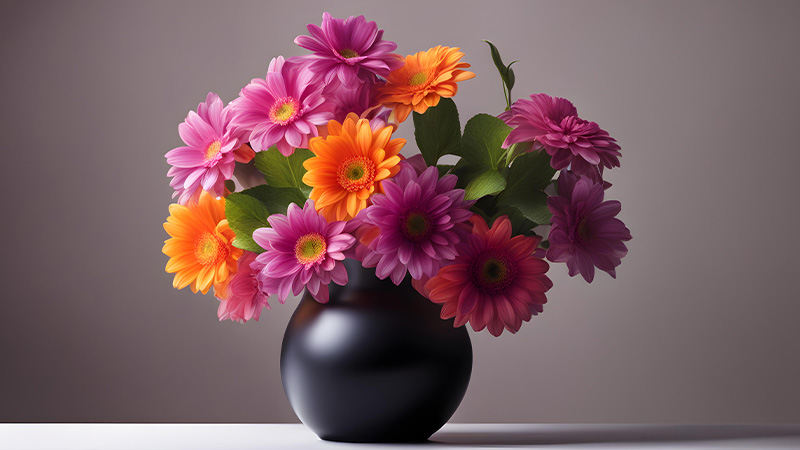
By exploring the diverse range of materials used to create artificial flowers, we can gain a deeper appreciation for the creativity and innovation that goes into floral design.
Whether crafted from foam, clay, recycled materials, or a combination of materials, artificial flowers offer endless possibilities for creating stunning floral arrangements that capture the beauty of nature in all its forms.
Understanding what artificial flowers are made of allows us to appreciate the intricate details and craftsmanship that go into each bloom, from the choice of materials to the techniques used in their construction.
Construction Techniques
The construction of artificial flowers involves a combination of traditional craftsmanship and modern technology. Skilled artisans painstakingly assemble each flower by hand, using techniques such as molding, cutting, and painting to achieve the desired shape and appearance.
Advanced machinery and tools are also used to mass-produce artificial flowers quickly and efficiently, ensuring consistent quality and precision. Key Points about Construction Techniques:
- Handcrafted Assembly: Many artificial flowers are meticulously handcrafted by skilled artisans, who carefully assemble each flower petal by petal to create lifelike blooms. This labor-intensive process requires precision and attention to detail, resulting in stunning floral replicas that are virtually indistinguishable from real flowers.
- Molding and Shaping: Some artificial flowers are created using molds and shaping techniques to achieve intricate details and lifelike shapes. Materials such as plastic, clay, and foam can be molded into various forms and then assembled to create realistic flower petals, leaves, and stems.
- Painting and Coloring: Coloring is an essential step in the construction of artificial flowers, as it helps to enhance realism and add depth to the final product. Flowers may be painted by hand or airbrushed using specialized techniques to achieve vibrant colors and realistic shading. Additionally, details such as veins on petals and subtle color variations are often added using fine brushes and pigments.
- Assembly Line Production: In addition to traditional handcrafted techniques, many artificial flowers are also produced using assembly line methods to streamline the manufacturing process. Advanced machinery and tools are used to cut, shape, and assemble flower components quickly and efficiently, resulting in large quantities of uniform and consistent artificial flowers.
- Quality Control: Throughout the production process, strict quality control measures are implemented to ensure that each artificial flower meets the highest standards of quality and craftsmanship. Flowers are inspected at various stages of production to check for defects, inconsistencies, and imperfections, ensuring that only the finest blooms make it to market.
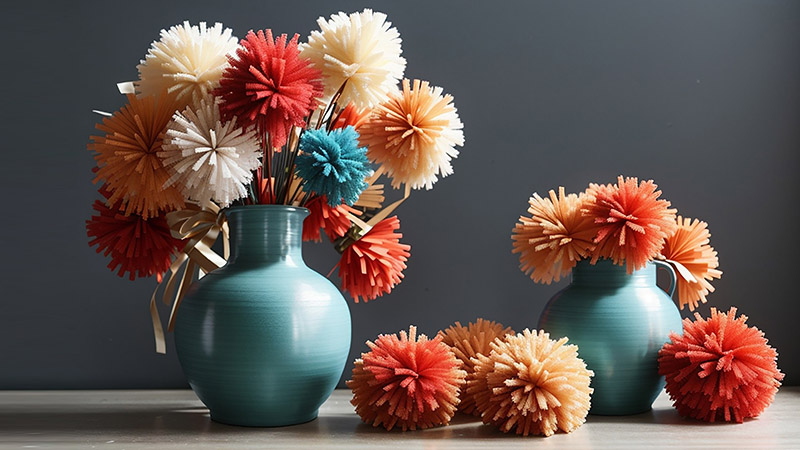
By understanding the construction techniques used to create artificial flowers, we can gain a deeper appreciation for the artistry and craftsmanship that goes into making these stunning floral replicas.
Whether handcrafted by skilled artisans or mass-produced using advanced machinery, artificial flowers are a testament to human creativity and innovation, allowing us to enjoy the beauty of nature in all its forms, regardless of season or location.
Conclusion
In conclusion, artificial flowers are made from a wide range of synthetic materials, including fabric, plastic, paper, and more. These materials are carefully selected and crafted to mimic the appearance and texture of real flowers, resulting in lifelike replicas that are indistinguishable from the real thing.
Whether you prefer fabric flowers for their softness, plastic flowers for their durability, or paper flowers for their eco-friendliness, there’s a perfect artificial bloom out there for every occasion. Understanding what artificial flowers are made of allows us to appreciate the craftsmanship and versatility behind these stunning floral replicas.
